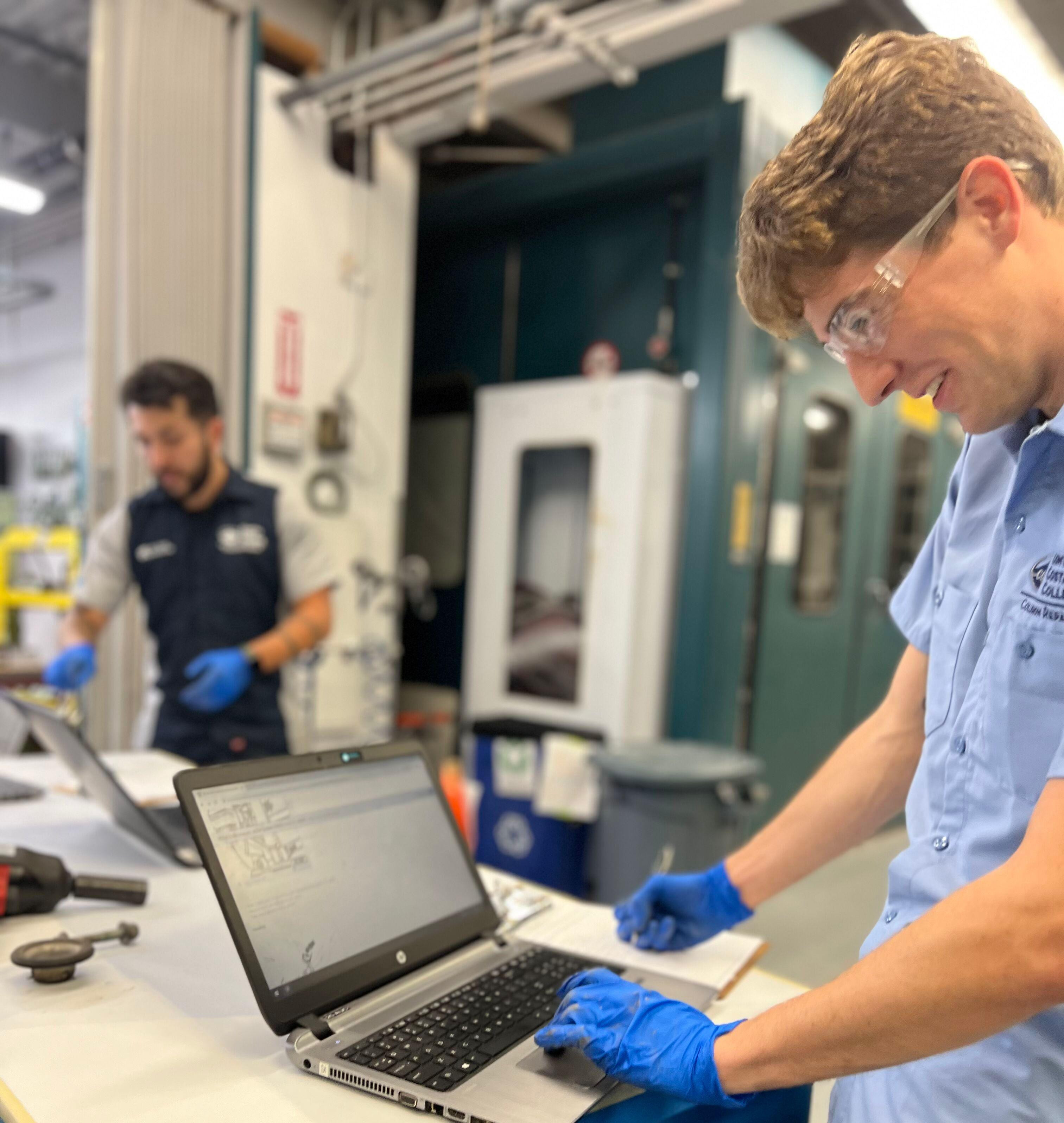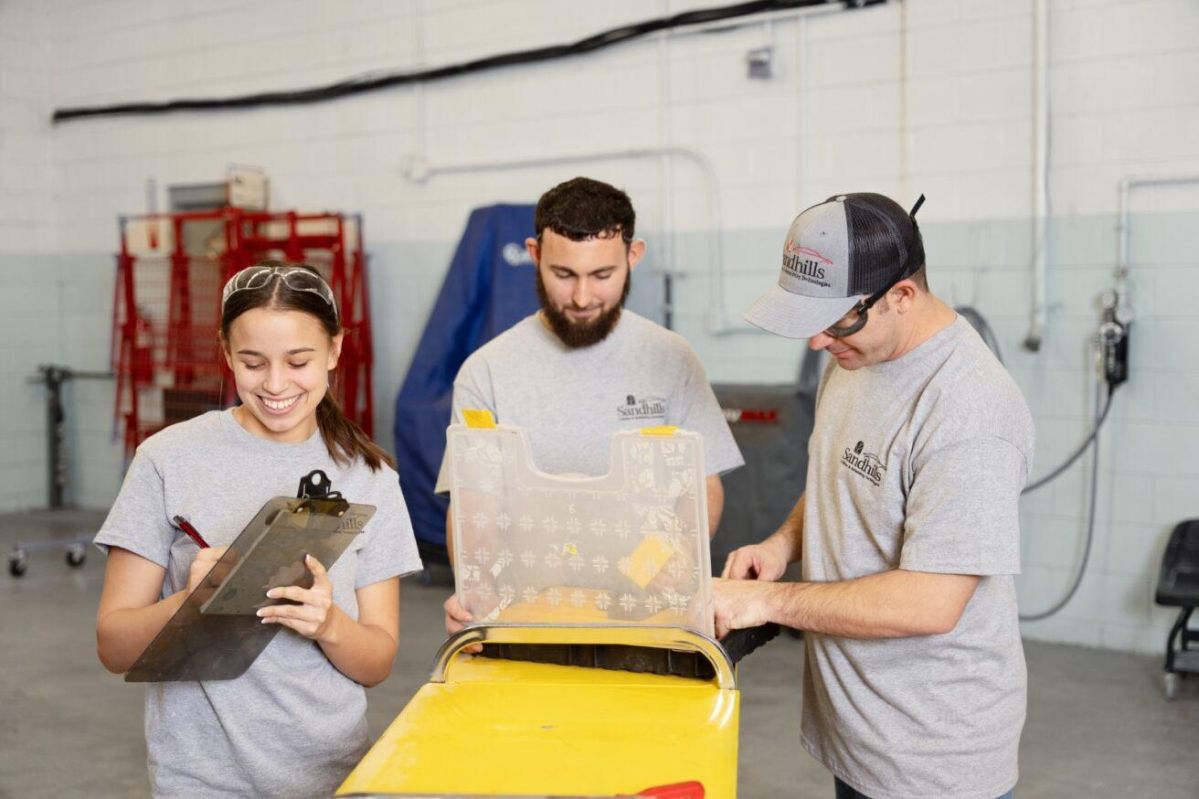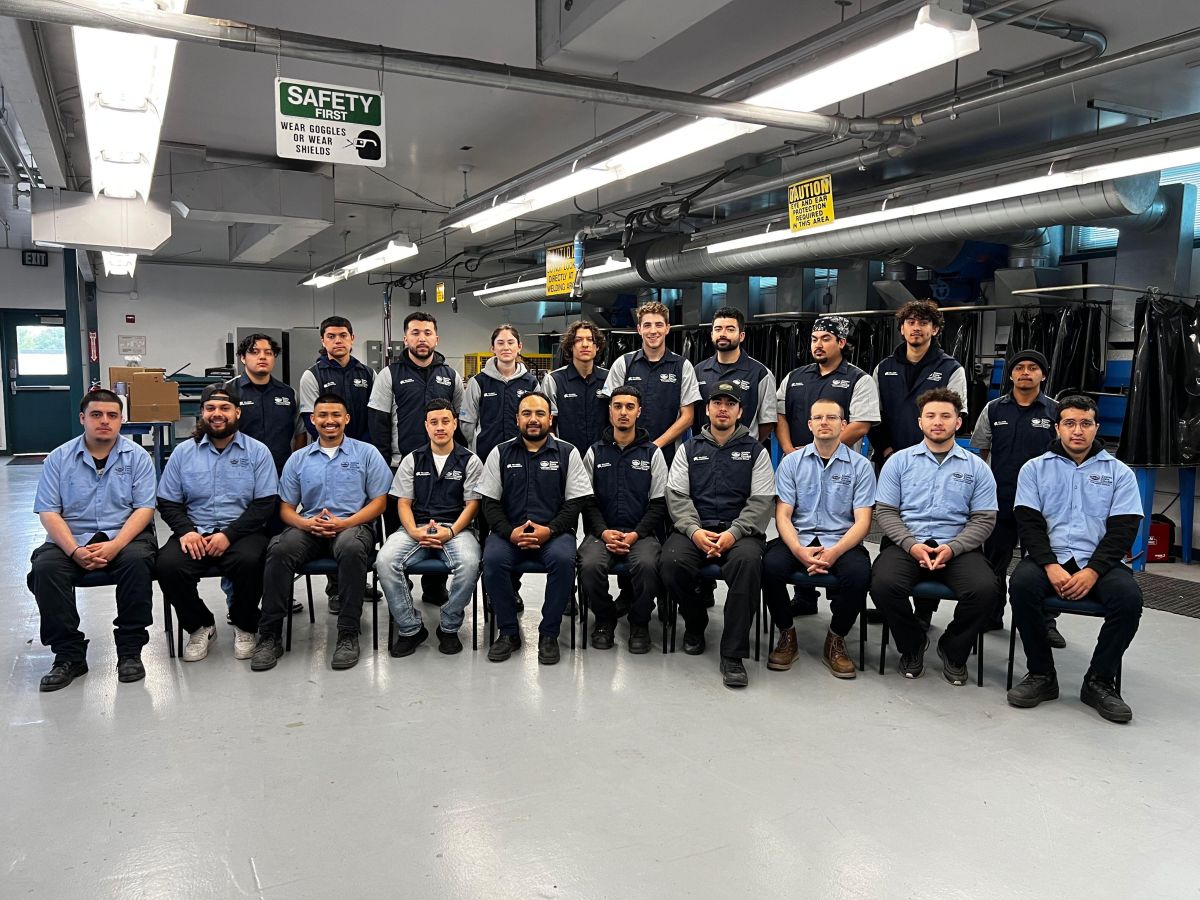In 2020, Missouri-based Enterprise Mobility and Ranken Technical College in St. Louis joined forces to develop a new model to effectively train and support aspiring collision repair technicians.
Five years later, the Collision Engineering program is already a success story in six schools across the U.S., and it’s only getting started.
The Collision Vision podcast, driven by Autobody News and hosted by Cole Strandberg, wrapped up its “Talent Shortage and Workforce Development” series with Mary Mahoney, vice president of the Replacement & Leisure Division at Enterprise Mobility and a key leader in the Collision Engineering program, to discuss how it is expanding to make an even greater impact, and how shop owners can engage with and benefit from this growing talent pipeline.
Why Was the Collision Engineering Program Founded?
Mahoney said there is a massive shortage of collision technicians globally, citing research by the TechForce Foundation that showed 110,000 new technicians will be needed by 2028. On top of that, increasingly complex new vehicles means incoming techs need to be trained not only how to repair physical damage, but the technology as well.
“Out of that need, Collision Engineering was born,” Mahoney said.
In 2019, Carolyn Kindle, CEO of the Enterprise Mobility Foundation, asked Mahoney to visit Ranken Technical College to observe key components of the school’s collision repair education programs that could “help us build a new model to solve this, maybe around the world, at least around the U.S.,” Mahoney said.
Mahoney visited the school, along with representatives from MSOs, independent shops, insurance companies, parts companies and glass companies.
“We all agreed…it's what we need to try to solve this around the country,” Mahoney said.
Kindle invested in the resulting business plan to test the model for two years. The Collision Engineering program was launched in 2020 in four schools around the country. Today, the program has expanded to six, with more in the works.
Mahoney said Kindle’s vision is a family trait -- her grandfather, Jack Taylor, founded Enterprise, and also believed it was critical for every stakeholder in the automotive industry to be involved for it to move forward as a whole.
How is Collision Engineering Different?
“It's a unique model,” Mahoney said.
During the two-year program, students rotate between eight weeks in the classroom and eight weeks as an apprentice in a local body shop. At the end of those two years, they earn an associate degree and have a job.
The curriculum is progressive, Mahoney said, “meticulously crafted to transition to those advanced levels, to keep the quality of that student moving forward, so it's a benefit to the shop.”
Curriculum content comes from I-CAR, ASE and the OEMs.
“We like to say it's education driven by industry, because the industry knows what we need today,” Mahoney said. “As we move forward with these evolving vehicles, the apprenticeship is key. That was the piece we believed we were missing -- working hands-on in the shop.”
Enterprise conducted a market study before implementing the pilot, and found the No. 1 demographic most interested in the program were women who had been in the workforce already for six to eight years and were looking for a career change that would allow them to use their creative talents. Second through fourth on the list were ethnic minority groups including Asian, Hispanic and African-American; veterans; and high school students.
Collision Engineering Career Alliance
The response to the Collision Engineering program was so strong, a new nonprofit was formed, the Collision Engineering Career Alliance. It launched in February.
“We are our own public nonprofit outside of Enterprise, and we want everybody to join us,” Mahoney said. “We can't do it alone. But we're excited to move forward with this project and this structure, in a more formalized fashion.”
 Student Jeff Solis.
Student Jeff Solis.
The goal is to continue expanding the Collision Engineering program to schools around the country, Mahoney said.
“We would love to see 55 schools” -- one in every market Enterprise operates in, she said. “We don't believe that this is going to be solved at a national level. We believe it needs to be solved at a local level.”
That means a local school with the local community of collision repair shops, insurance companies, glass companies and Enterprise, to “build a pipeline of collision technicians right there in the community where they work and live,” Mahoney said.
The local shops that support the program by providing apprenticeships are part of large MSOs in some cases, small independents in others. Mahoney said both are valuable. She suggested those shop operators consider serving on the advisory boards for their local Collision Engineering program, to help guide the curriculum and get a chance to connect with the students.
Operators not located near a school where the Collision Engineering program is offered can still get involved by participating in high school and post-secondary school job fairs, or serving on an advisory board or offering apprenticeships for students at a local school that has its own collision repair education program.
“Don't wait until one of these students graduates. You want them up front. You want them at an early level. You want them at the apprenticeship level,” Mahoney said. “Work with your local colleges, your local high schools, and make sure the community knows who you are and what kind of an employer you are as well.”
Collision Engineering Program School Partners
Mahoney said the Collison Engineering program looks for private or public nonprofit schools that offer associate degrees, and have an existing automotive program.
Beyond that, the program seeks out “instructors and leaders who really want to make a difference and really grow this industry and support this industry,” she said -- people like Joe Baker, auto collision technology instructor at Metropolitan Community College in Omaha, NE, and Laura Lozano, professor of collision repair technology and co-chair of the automotive department at Contra Costa College in San Pablo, CA.
“They get so energized that the industry cares enough to support them and wants to make them better,” Mahoney said.
She said leaders at all six of the Collision Engineering program’s current six participating schools “work together as if they've known each other for years, and they haven't. We meet, we share best practices. We help each other with the challenges.
“It's really a community within a community that we've built through this, and we're just getting started,” Mahoney added.
Collision Engineering Program Graduates
Mahoney said the goal of the program is to produce a “high-quality employee that hits the ground running.” In addition to the technical curriculum, students learn personal and professional skills like workplace communication. The in-shop mentors who work with the students also get training on those skills.
She shared comments from shop operators who have brought on students as apprentices and hired graduates of the Collision Engineering program.
Amber Alley, general manager of Barsotti’s Body & Fender in California, was one of the first shop operators to sign on as a partner with her local Collision Engineering school, Contra Costa College. She also hired the first student to graduate from that school’s program.
 Sandhills Community College students.
Sandhills Community College students.
“She says, ‘I think a program like this is exactly what we need to change the perception of the industry,’” Mahoney said. “Her belief that could alter that for better has proven true, as she continues to employ and support graduates who strive to be better every single day.”
Mahoney also read a comment from Tiffany Silva, owner of Accurate Auto Body, also in California: “Collision Engineering is a solution we've all been looking for. It's a breath of fresh air, bringing technicians who are eager to learn from industry leaders.”
Mahoney said Silva also pointed out the students aren't just filling roles, but excited to actively contribute to and enhance the workplace with their enthusiasm and dedication every single day. Silva called the graduate she hired “the most high-quality employee I've ever had.”
Crash Champions, a national MSO, has its own training program, but founder and CEO Matt Ebert also supports the Collision Engineering program. The company held a golf tournament to raise money for the program, and also has about 35 students from around the country completing their apprenticeships at a local Crash Champions.
“He believes there's not one pathway to solving this, that there's multiple pathways,” Mahoney said.
How to Host Collision Engineering Program Students
Strandberg asked how shops can position themselves to host students of a local Collision Engineering program for apprenticeships.
Mahoney said students get to pick the shop where they want to complete the apprenticeship portion of the program.
“The shop needs to be in front of these schools, in front of these students, to say, ‘I am a great place to work. Here's who I am. I would love to employ an apprenticeship program,’” Mahoney said. “So get involved. You can't wait for them to come to you.”
Participating shops are expected to pay apprentices minimum wage, but preferably a little higher. The program will subsidize the pay over minimum wage, “because we believe this will be a quality employee for that shop, so we cover the cost of that,” Mahoney said. “We also cover the cost of helping train the mentor with professional and personal development, which they all seem to really, really benefit from.”
Graduates of the Collision Engineering program are passionate about the industry and need an employer who will help them continue to evolve to reach their career goals, whether that’s to manage or own a shop, or one day teach.
Advice for Shops Struggling to Attract New Employees
In the early research phases of the Collision Engineering program, Enterprise learned the younger generation “needs to know that the workplace cares about them,” Mahoney said, by offering benefits like mentoring and growth opportunities.
She said younger employees are also looking for purpose-driven workplaces, which collision repair fits perfectly.
“There's nothing more valuable and purpose-driven than rebuilding these vehicles to safe and proper standards,” Mahoney said.
“We're focused on the long term, solving this [shortage] for good,” Mahoney said of the Collision Engineering program. “That is going to continue to work with the model, which is bringing industry, education and community together. Nobody can do this on their own. And that's at a global level. We need to improve and innovate together. We need to look at different ways of training and teaching. We need to invest in people together. They're worth it for the long term.”
For more information on the Collision Engineering program, visit www.beacollisionengineer.com.














Abby Andrews